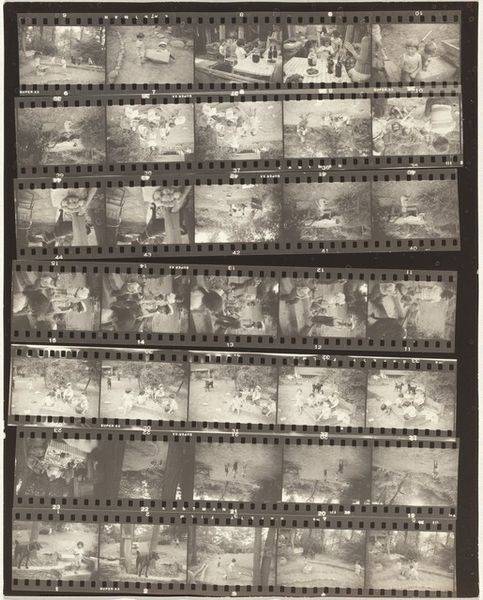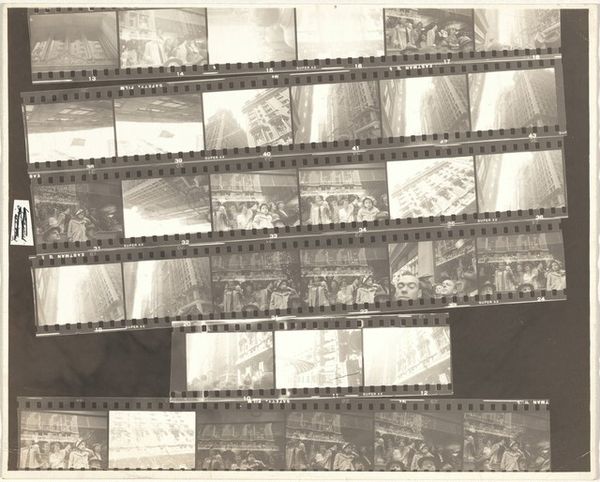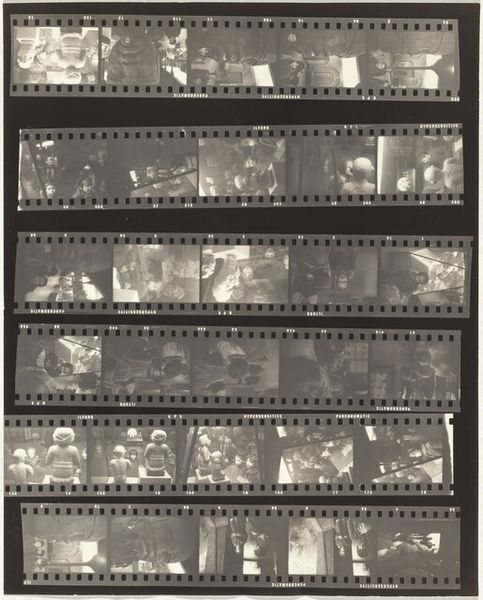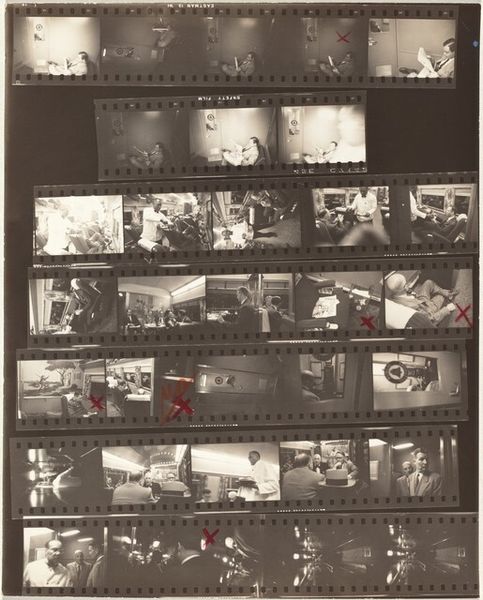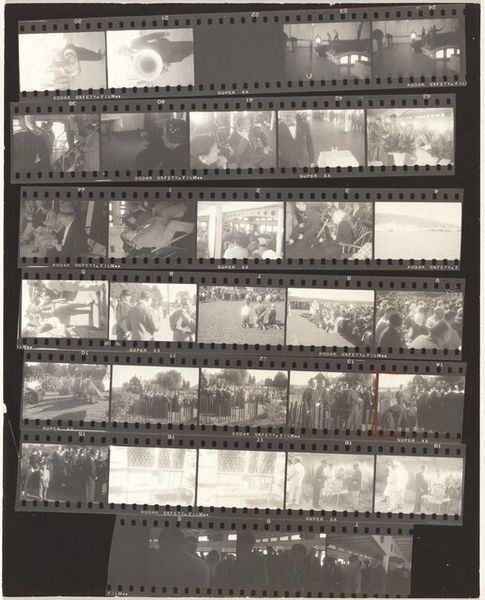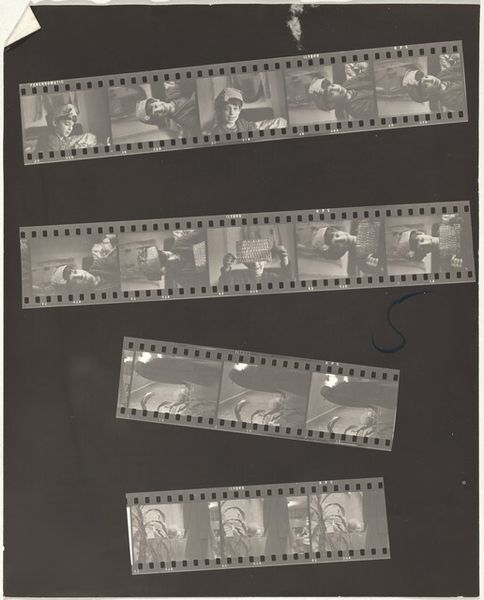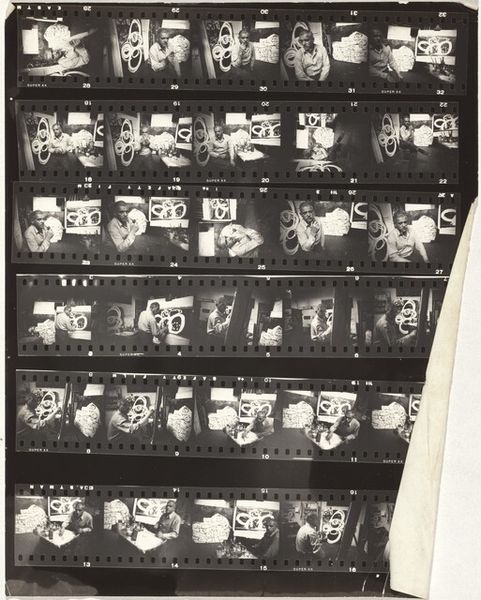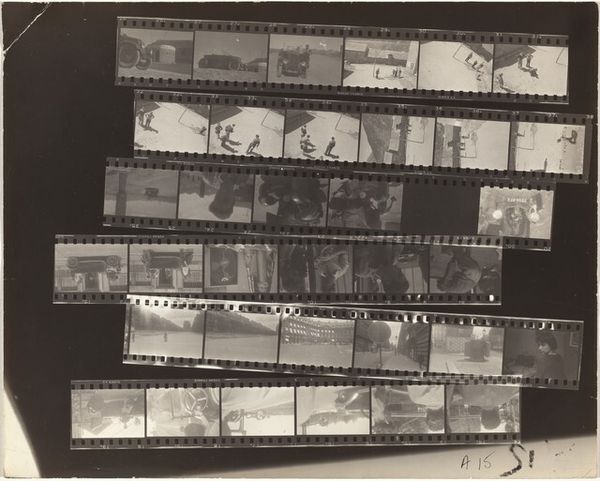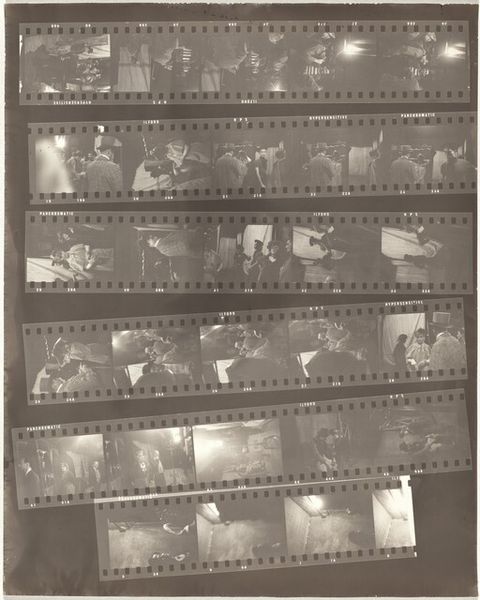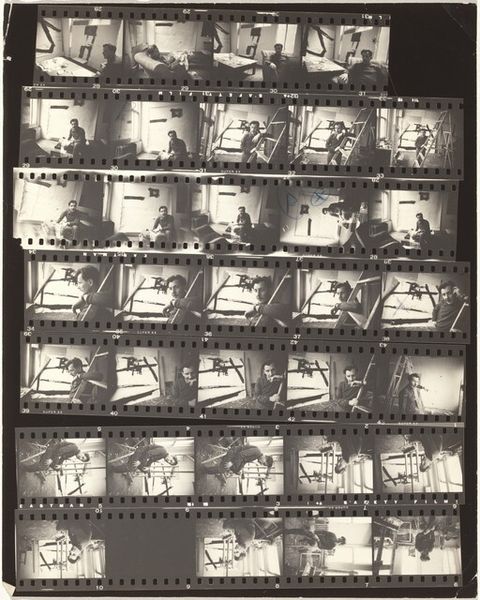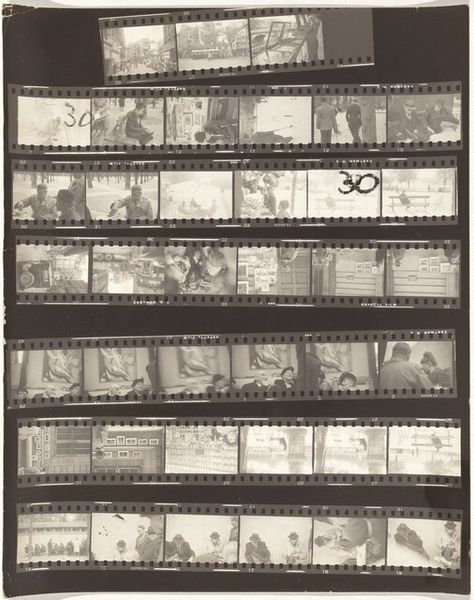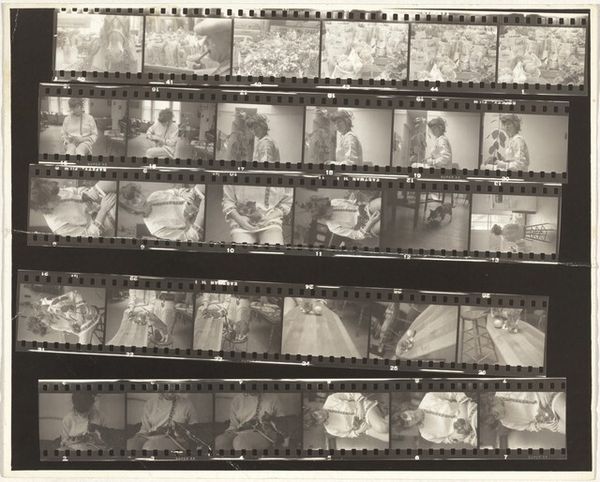
photography, gelatin-silver-print
#
portrait
#
archive photography
#
photography
#
gelatin-silver-print
#
ashcan-school
Dimensions: overall: 25.2 x 20.1 cm (9 15/16 x 7 15/16 in.)
Copyright: National Gallery of Art: CC0 1.0
Editor: This is Robert Frank’s "Painters no number", a gelatin silver print from the 1950s. It's essentially a series of contact sheets showing a painter in their studio. I'm immediately drawn to the artist at work, surrounded by his paintings and all the markers of an artistic milieu. How does this photograph speak to the social context of art creation during that period? Curator: This image offers a glimpse into the daily life of an artist, far from the romanticized ideal of the solitary genius. By presenting it as a contact sheet, Frank unveils the working process, the trial and error inherent in artmaking. Consider the social landscape of the 1950s; artistic circles were often tightly knit, with their own hierarchies and power dynamics. Frank, as an outsider in many ways, captures the artist in their raw, unglamorous reality. Do you notice how the frame includes the photograph’s own material evidence? Editor: That’s fascinating, yes. I see it too. It feels very authentic, almost like a behind-the-scenes look. The way it includes the markings on the film is almost like an anti-art statement. Does this piece suggest anything about Frank’s commentary on art institutions, or his intention by capturing painters in what seems to be intimate and unrehearsed settings? Curator: Precisely. Frank often positioned himself outside mainstream artistic circles, acting as a social observer. "Painters no number," presented unconventionally as a contact sheet, perhaps critiques the formalistic tendencies of art institutions, favoring instead an unfiltered perspective of artistic labor. These were the years just preceding the huge popularity of Pop Art; does this influence the image’s social critique in any way? Editor: It does recontextualize this image when viewed against the rise of Pop Art. So, instead of elevating a single polished artwork, Frank gives us an unfiltered view into the process and the somewhat less celebrated environment of the artist. It feels less precious somehow. I appreciate learning that. Curator: Indeed. Frank’s photograph becomes a valuable document, revealing not just an image of an artist, but also the social conditions that shaped their creative production, and how even presentation impacts artistic consumption.
Comments
No comments
Be the first to comment and join the conversation on the ultimate creative platform.

